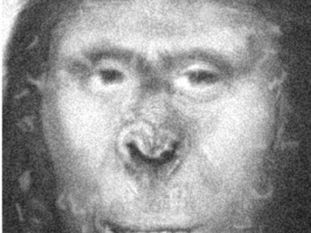The chilling tale of Peter Stumpp, the so-called Werewolf of Bedburg, is one of the most infamous werewolf stories in history. His case fueled werewolf hysteria in 16th-century Europe and remains one of the best-documented instances of alleged lycanthropy.
The Legend of Peter Stumpp
Peter Stumpp was a farmer living in Bedburg, in what is now North Rhine-Westphalia, Germany. By all accounts, he was a well-respected member of his community. However, in 1589, he was accused of being a werewolf responsible for a series of gruesome murders that had terrorized the region.
According to reports, Stumpp confessed under torture that he had practiced black magic since childhood. He claimed that the Devil had given him a magical belt that allowed him to transform into a wolf at will. In his wolf form, he allegedly killed and devoured livestock, women, and children. Among his victims were his own son, whom he reportedly ate, and several townspeople.
The Trial and Execution
Stumpp’s trial was a gruesome affair, with sensationalist pamphlets spreading details of his crimes across Europe. His confession was likely forced through extreme torture, which was common practice during witch and werewolf trials. Despite this, he was sentenced to a horrifying execution. On October 31, 1589, Stumpp was put to death in one of the most brutal public executions of the time. He was placed on a breaking wheel, where his flesh was torn with hot pincers before being beheaded and burned. His daughter and mistress were also executed alongside him, accused of complicity in his alleged crimes.
Werewolf Hysteria in Medieval Europe
The case of Peter Stumpp was not an isolated incident. The late 16th and early 17th centuries saw widespread fear of witches and werewolves, particularly in Germany, France, and Switzerland. Many were executed under accusations of lycanthropy, often due to political and religious tensions of the time.
Was Stumpp Really a Werewolf?
Modern historians and scholars debate whether Stumpp was truly a serial killer or simply a victim of mass hysteria and persecution. Some suggest that he may have been a scapegoat for unsolved murders, while others argue that he was suffering from a mental illness, such as clinical lycanthropy—a rare psychiatric disorder in which individuals believe they can transform into animals.
Conclusion
The story of Peter Stumpp continues to fascinate historians and paranormal enthusiasts alike. His case became one of the most widely circulated werewolf accounts of the time and helped shape the terrifying image of the werewolf in folklore and pop culture. I cant help but see the connection of this magic belt and that of skin walkers lf. This idea of enchanted objects enabling transformation appears in various cultures. In European folklore, there are numerous tales of cursed or bewitched items allowing people to change shape, often linked to the Devil or dark magic.
A similar concept exists in Native American folklore with the Navajo skinwalkers—powerful witches who can take on the form of animals. Unlike werewolves, skinwalkers do not require a physical object to transform but are said to use dark rituals and wear animal skins to assume different shapes. Despite these differences, both legends share themes of supernatural transformation and the fear of individuals who can shift between human and animal forms.
Whether he was a deranged murderer, a victim of superstition, or something more sinister, the legend of the Werewolf of Bedburg remains one of the darkest tales of medieval Europe..

